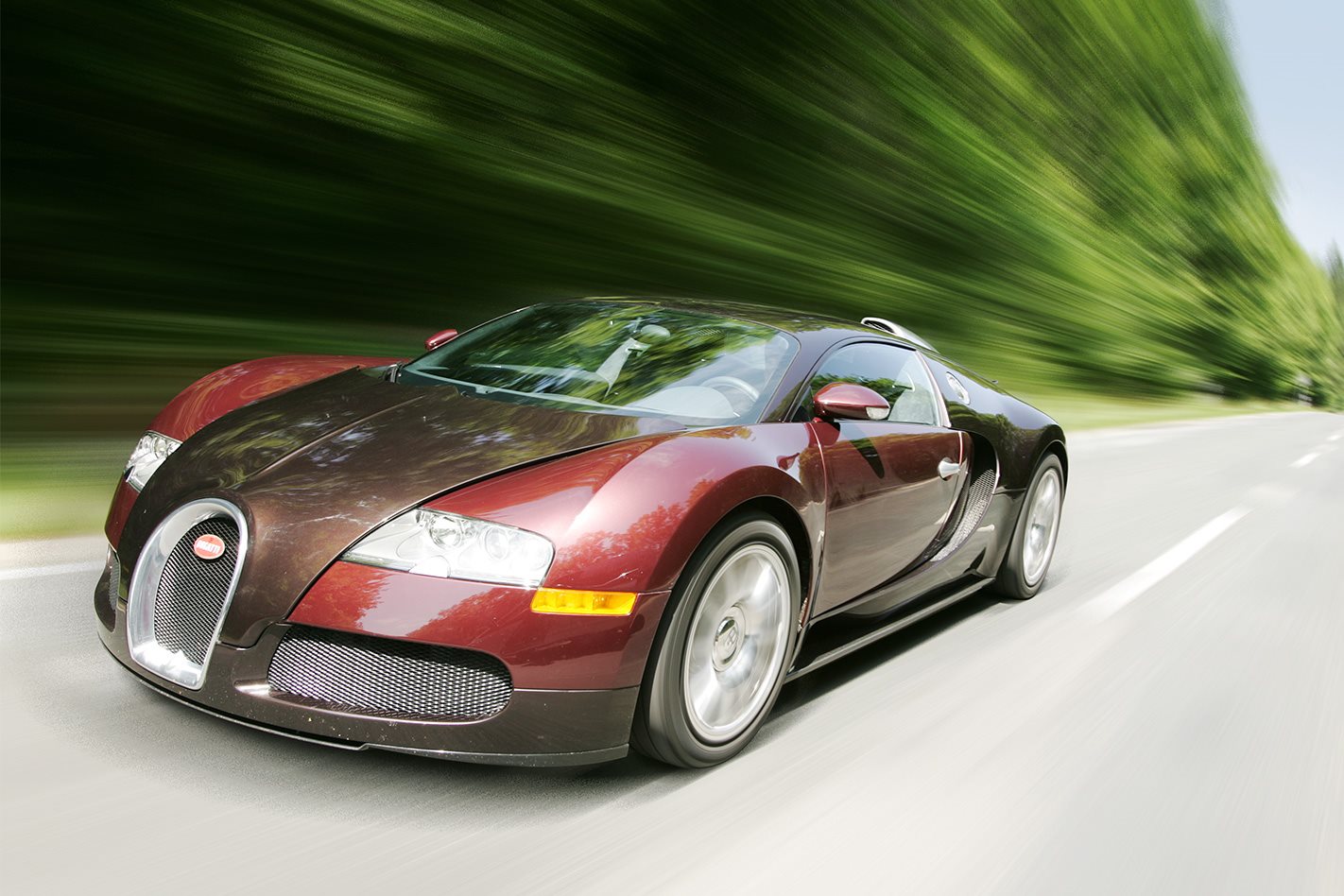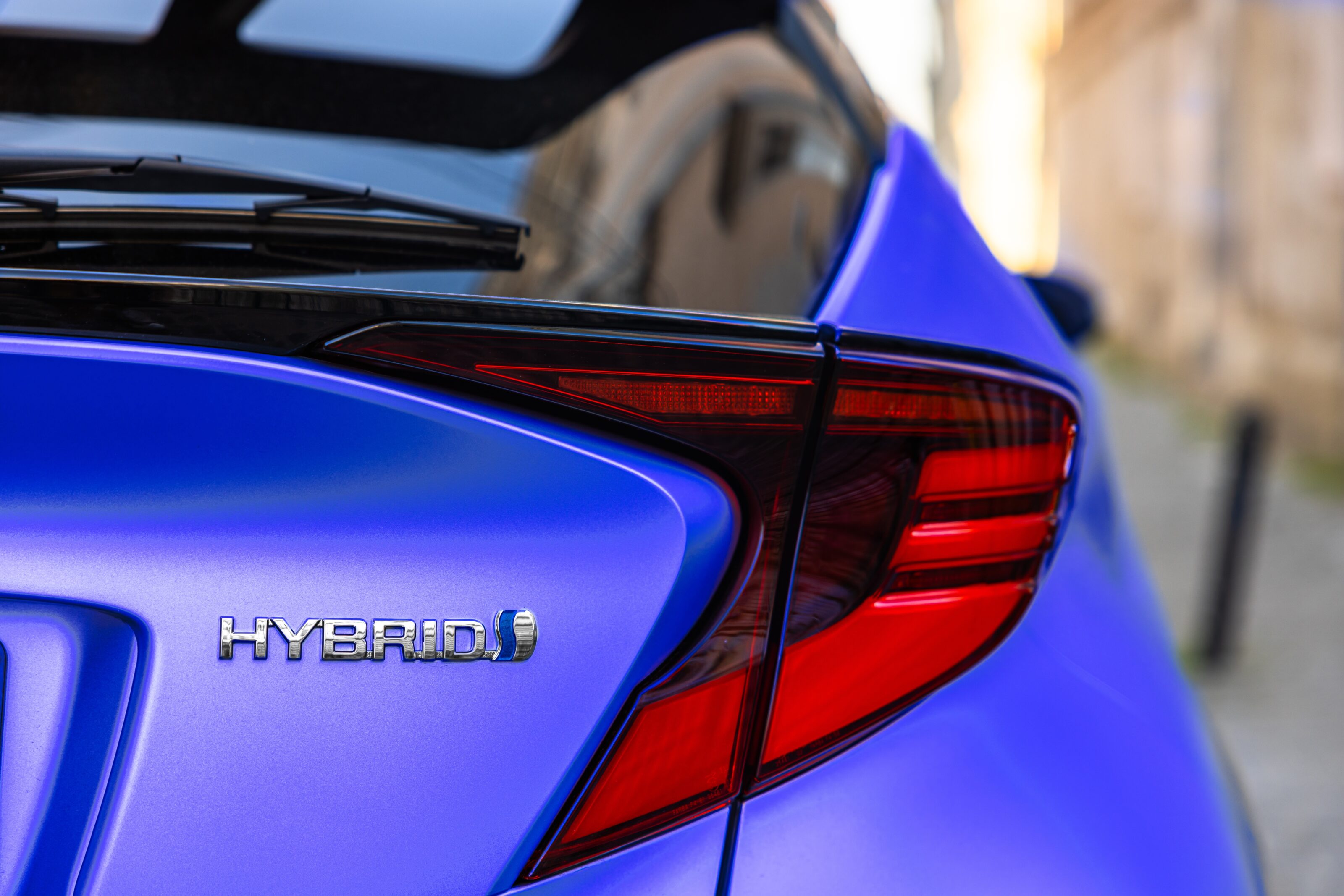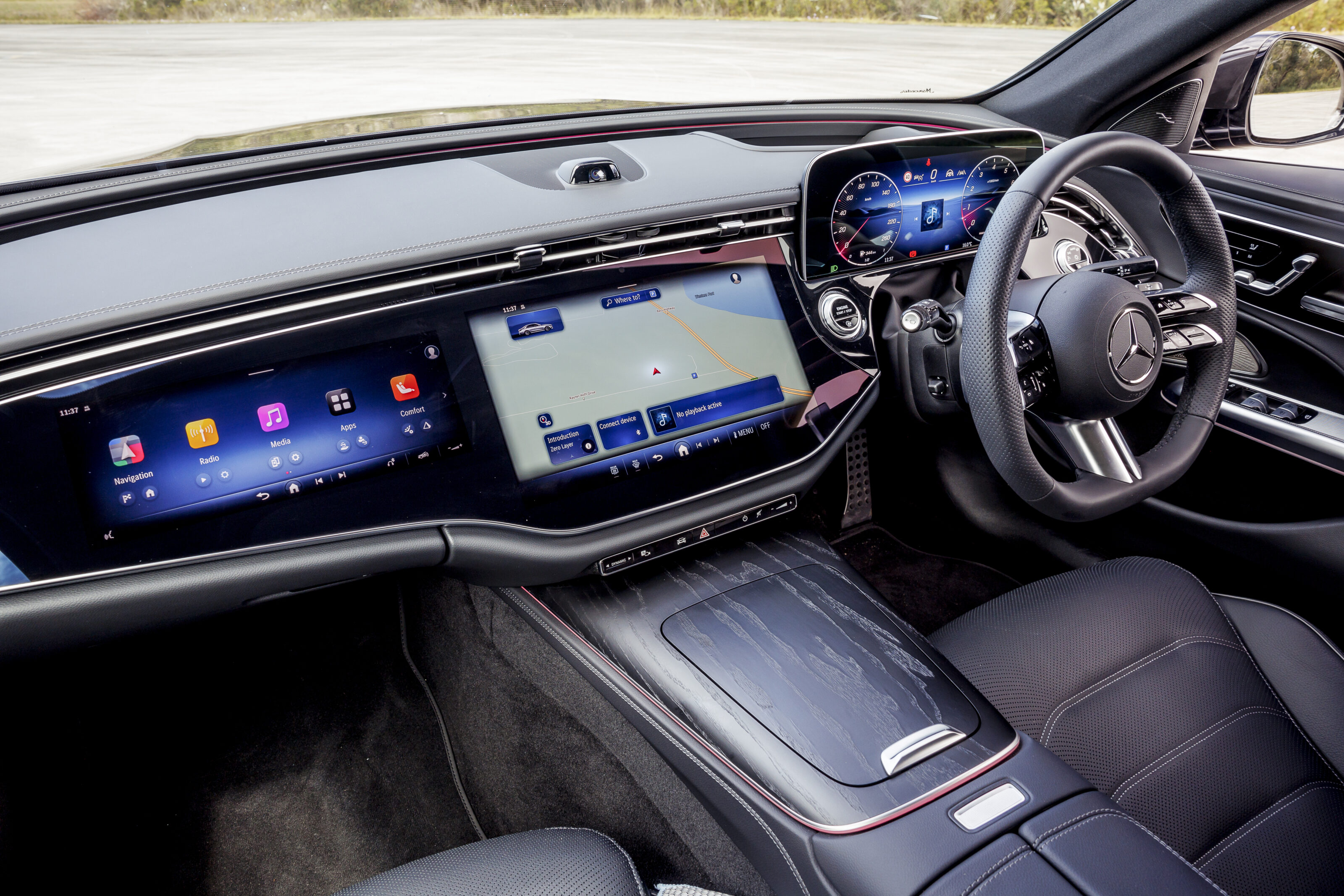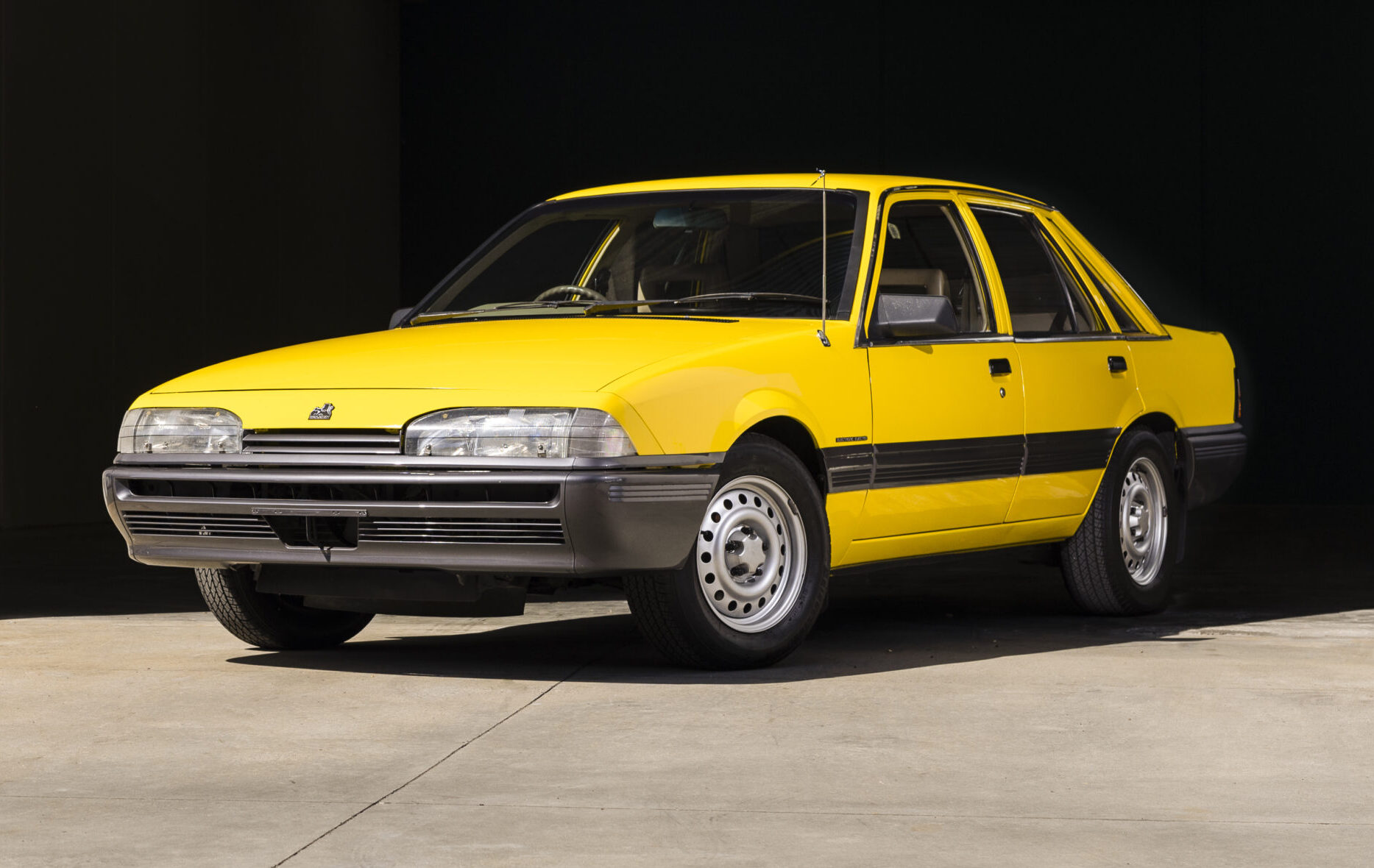To the left of the instrument binnacle is a round dial, the likes of which I haven’t seen before.
This article was originally published in the October 2005 issue of MOTOR.
The needle starts at zero and whaps all the way around to the 1000bhp* mark. It’s a display of the enormous elemental force produced by the EB 16.4 Veyron’s awesome W16 quad-turbo engine.
To reach 250km/h, which is where most rivals throw in the electronic towel, no more than 200kW is required. So, what happens when you summon the remaining 536kW? “Then hell breaks loose,” says technical director at Bugatti Engineering, Wolfgang Schreiber. He is one of only three people who regularly whips the EB 16.4 all the way to the limit. The tests are conducted on racetracks, on VW’s own proving ground in Ehra-Lessien, and on German country roads and autobahns.
“The Veyron is a truly ground-breaking piece of kit,” declares the 47-year-old engineer. “And the maximum combustion energy does in fact add up to 3000bhp – 1000bhp is swallowed by the cooling system, 1000bhp go through the exhaust and 1000bhp are relayed to the four driven wheels.

it requires respect.”
I nod my ‘respect’ at Wolfgang as I image 200km/h speed differentials on the autobahn, but secretly I’m thinking, Respect? No shit, Sherlock.
Anything is possible…
The Bugatti Veyron was built to set a performance standard no other marque could match. And to get there VW boss Dr Ferdinand Piech had initially insisted on an 18-cylinder engine, he eventually settled for the W16 – two 4.0-litre W8 units mid-mounted and stuck together end-to-end. Compromising on the engine was one thing, he wouldn’t compromise on its output.
The maximum power output had to nudge 1000bhp, and the maximum speed had to be in excess of 400km/h.
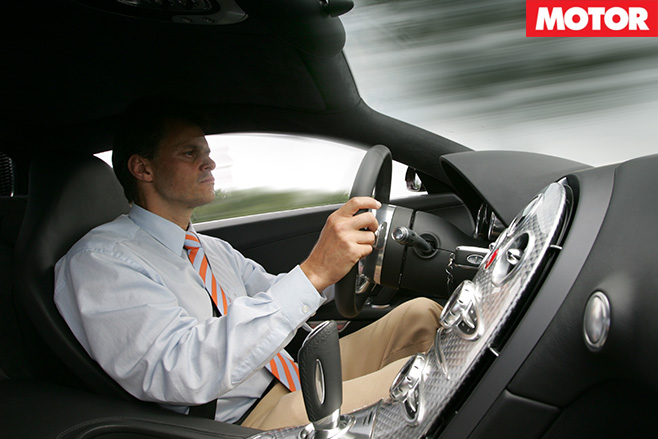
How to beat wind resistance…
“At very high speed, a perfect balance between the drag coefficient and the downforce is essential,” declares Schreiber. “Before you can attempt to reach the maximum speed of 406km/h, the car’s aerodynamic profile needs to be adjusted.”
To do that, the driver turns the so-called ‘speed key’ located between the seat and the sill. In ‘top-speed’ mode, the rear wing and the tail spoiler above it retracts almost fully, the front diffuser panels close, the ride height drops to 65mm at the front and 70mm in the back, dropping the drag coefficient from 0.37 to 0.36.
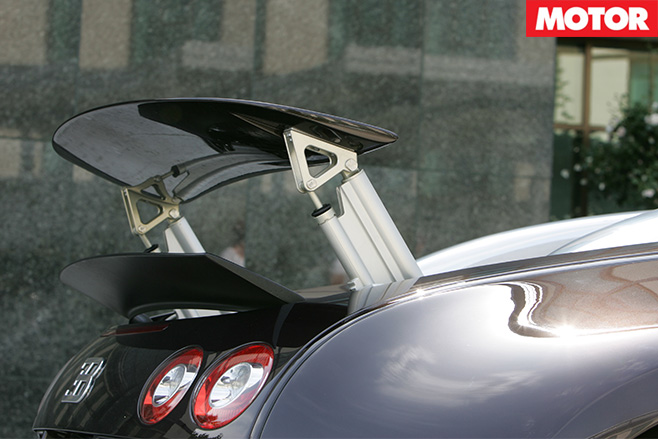
Like the Merc McLaren SLR, the Veyron is equipped with an air brake. Schreiber explains, “When you hit the pedal hard at 200km/h-plus, the air brake effects a deceleration of 0.6g. And downforce increases by almost 300kg. As a result, the rear wheels take a much larger share of the brake balance without approaching their lock-up limits.”
Staying cool under pressure…
“It’s impossible to completely cool down the energy freed by 736kW,” says Schreiber. “But you can increase the throughput by implementing stringent air-flow management. We are not just talking about the number and size of cooling apertures here, but also about important details like ducts, flaps and fins.”
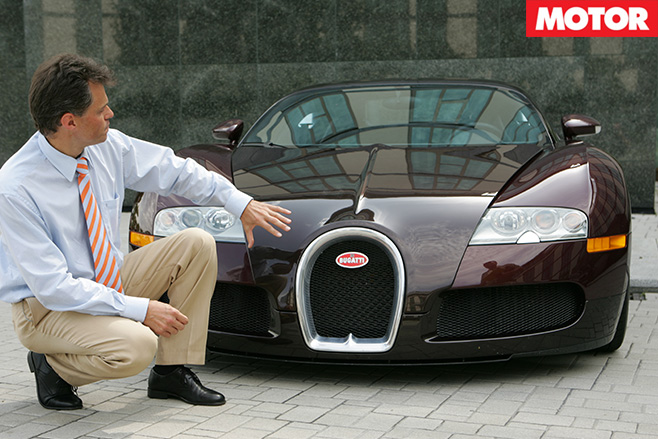
“It is extremely difficult to find a common denominator for the cooling and aero requirements,” acknowledges Schreiber. “With every extra cubic inch of air that flows through the car, the drag coefficient suffers and you lose a little speed.”
Building the foundation of speed…
The Veyron isn’t all just speed and show, Bugatti had to be realistic about the project and build a car that was as comfortable and safe pottering around town as it was blasting around a high-speed bowl.
As Schreider explains, “The Veyron covers a wider speed spectrum than any other sports car. Therefore, it must ride reasonably well at 40km/h, and at the same time it must be perfectly stable and confidence-inspiring at 400km/h. To meet these conflicting requirements, there are three suspension settings to choose from: standard, handling and top speed.
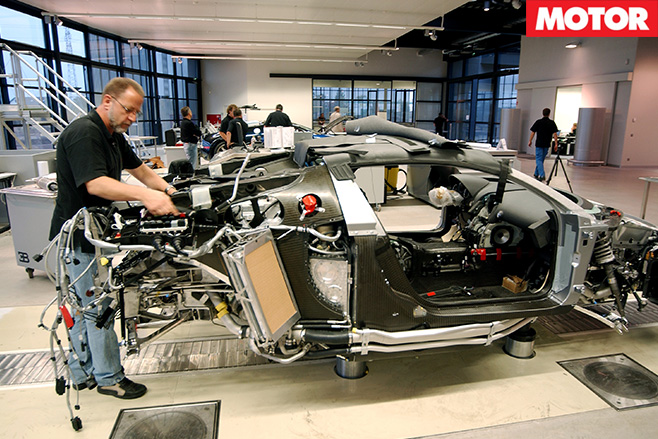
In standard mode, the Bugatti’s ground clearance is set at around 125mm front to back – enough to climb kerbs. And it runs on OZ wheels shod with run-flat tyres supplied by Michelin. The sizes read like credit card numbers: 265/680 ZR508A in the front, 365/710 ZR540A in the back.
The chassis incorporates an ambitious mix of high-tech elements. Carbon-fibre is the material of choice for the monocoque and the rails attached to it, while the tubular space frame which accommodates the front suspension and the rack-and-pinion steering is made of aluminium. The rear sub-frame and the transverse engine carrier are made from high-strength steel.

Fast with a capital F…
The performance figures recorded for this 1950kg two-seater are simply out of this world: 0-100km/h in 2.5sec (matching Valentino Rossi’s Yamaha), 0-200km/h in 7.3sec (eclipsing Schumi’s Ferrari F2005), and 0-300km/h in just 16.7sec. By way of comparison, a Ferrari 575M Maranello takes about a minute to get to 300km/h.
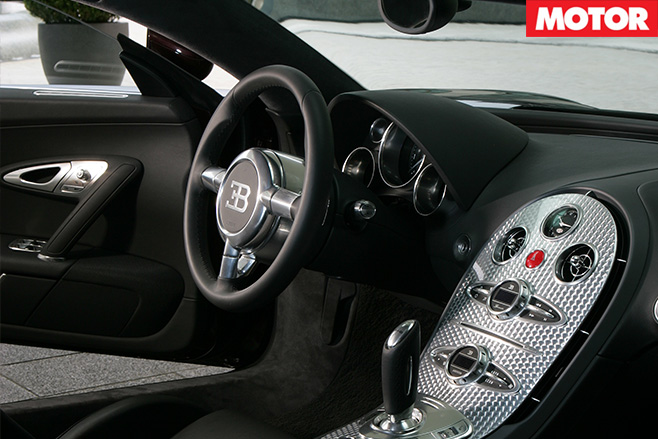
Getting from 380 to 400km/h…
Grouped around the gearlever are three buttons labelled launch control, start engine and handling set-up. “The Veyron is a pure-blooded driving machine, not a showcase for electronic gadgets,” states Schreiber. “That’s why we left out everything that could distract the driver.
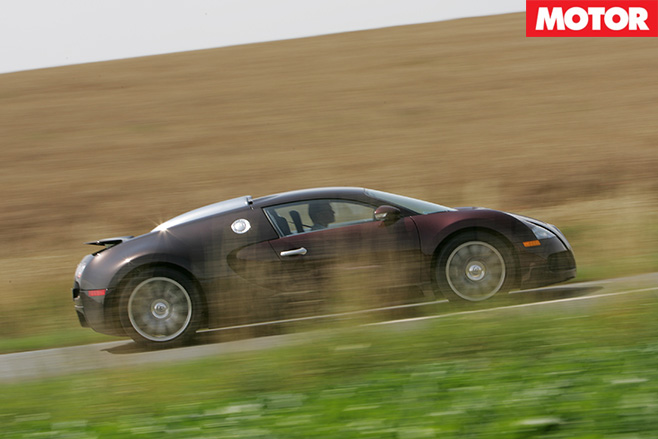
“What’s it like to drive at 400km/h or 250mph? It’s kind of a surreal experience, an excursion into a different world. It’s a big shot of adrenalin. After all, you are covering 111 metres per second. And at that speed the steering is totally devoid of any power assistance, the engine is approaching 6500rpm in seventh gear and tyre pressures climb from 3.0 to 3.5bar within 15 seconds.”
And this 400km/h-plus top speed is not a one-night only performance, never to be repeated in the ‘real’ world. During its test phase the Veyron cracked the magic 400 on a number of occasions and in early April this massive speed was officially recorded in a production-spec Veyron by the German homologation authority (TÜV – Süddeutschland).
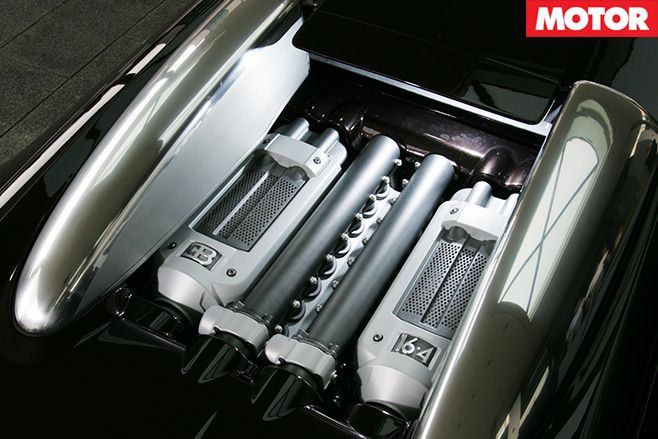
One good idea and 1001 hurdles…
It wasn’t plain sailing, though. Getting the Veyron from concept to rolling stock stage took an eternity, says Bugatti boss Thomas Bscher.
“In the beginning, it was pure chaos,” he said. “We counted over 600 problems with the basic packaging requirements, the whole cooling issue was one big unsolved problem, and the promised power output existed only on paper.”
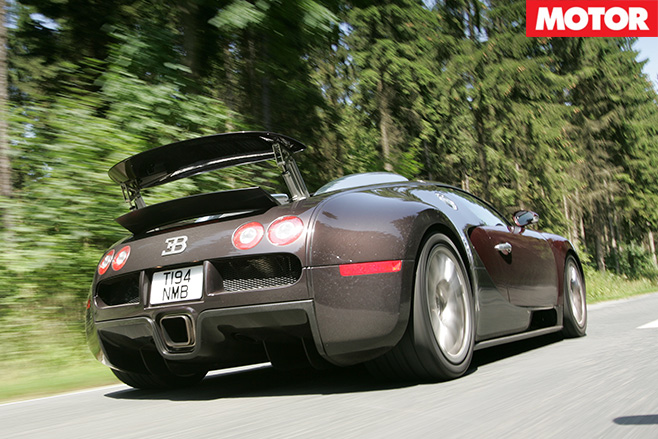
“Another sore point were the driveshafts which kept running dry. It turns out the rubber boots were being distorted by the extreme centrifugal forces so much so that they touched nearby deflector panels which cut them open, allowing the grease to escape. For safety and rigidity reasons, the monocoque and the entire front-end module of the car had to be redefined and reinforced.
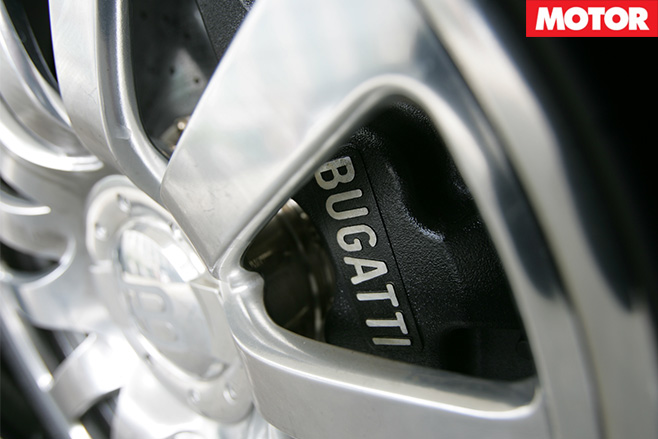
Coming to a store near you?
Even optimists would struggle to say the Veyron was commercially viable. After all, no more than, ahem, 30 to 40 cars have been sold so far (but not built), depending on who you ask. And according to the Molsheim grapevine, there are still at least ten free slots in the contingency for 2006. Not surprisingly, the current plan is to stretch the production over eight years instead of six.
The car is being sold ex-factory via an exclusive distribution network which relies on no more than 20 main dealers worldwide. Where it makes sense, Bugatti intends to tap into the Bentley network. The required down payment is $482,000, the warranty is limited to two years and 50,000km.
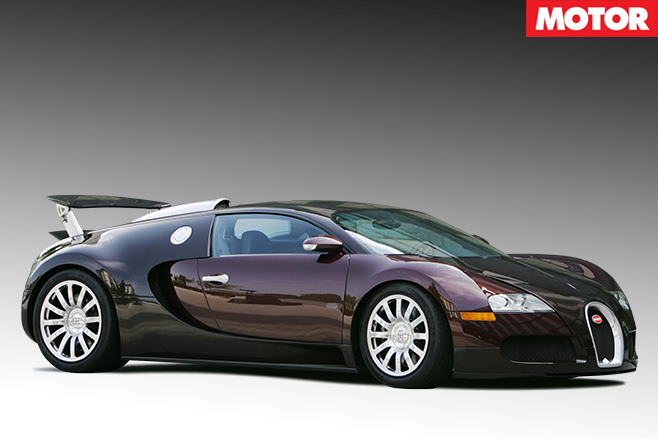
All this for 400km/h.
SPECS: BUGATTI VEYRON EB 16.4 Body: two-door coupe Drive: all-wheel Engine: mid-mounted 8.0-litre, 64-valve, DOHC, intercooled, quad-turbo W16 Power: 736kW @ 6000rpm Torque: 1250Nm @ 2200-5500rpm Weight: 1950kg Weight/Power: 2.65kg/kW Specific Power: 92.0kW/litre Transmission: seven-speed DSG Suspension: double wishbones, coil-over dampers with hydraulic actuation, anti-roll bar (f & r) Length/Width/Height: 4380/1994/1206mm Wheelbase: 2650mm Brakes: 400mm carbon-ceramic discs, eight-piston calipers (f); 380mm carbon-ceramic discs, six-piston calipers (r) ABS Wheels: 20 x 9.5-inch (f); 21 x 13.0-inch (r), alloy Tyres: Michelin PAX run flats, 265/680 ZR508A (f); 365/710 ZR540A (r) Price: $3,000,000 (approx)

